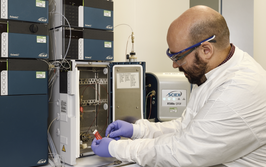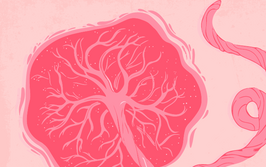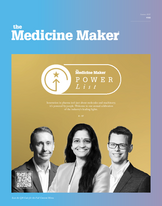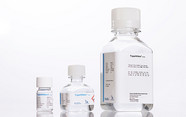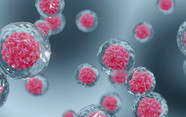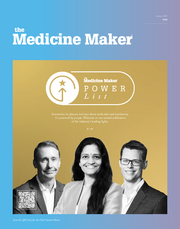The Blood Cancer Success Story: Part 2
We interview Lore Gruenbaum about The Leukemia & Lymphoma Society, advances in blood cancers, and how the field has seen many therapeutic firsts for the industry.
Stephanie Vine | | 6 min read

The Leukemia & Lymphoma Society (LLS) has been funding research since 1949 and has helped support several FDA-approved therapies, including Yescarta, Vyxeos, Elzonris, and Copiktra. In January 2025, Lore Gruenbaum became LLS’s Chief Scientific Officer.
In part 1 of our interview with Gruenbaum, we learned about her career spanning big pharma and biotech. Here, we take a deep dive into the work of LLS, including success stories and the pressing research gaps that remain. “There have been many firsts in blood cancer that have impacted other fields. For example, LLS was one of the early funders of the transplant field. Blood cancer also saw the first antibody approved for any cancer, and the field had some of the first precision medicines, such as Gleevec. Innovative CAR T therapies approved in blood cancer are now being explored in other cancers, diseases of the immune system and beyond.”
What is your role at LLS?
My role is to set the strategy. As you can imagine, LLS is involved in many areas, and we need to prioritize effectively. To do that, we take a close look at what others are already doing and identify the areas both in terms of biology and the broader ecosystem where we can make a real impact.
For example, every year we attend the American Society of Hematology conference. Afterwards, we meet and evaluate what we want to achieve in the coming year. We focus on specific diseases where patients still have poor outcomes, especially if they relapse after their initial treatment. Here, acute myeloid leukemia (AML) and T-cell malignancies are two such important areas.
We also focus on career development, ensuring we have a new generation of scientists from a broad range of backgrounds. In addition, we examine the types of clinical trials and technologies we want to support and drive forward.
Our strategy is rooted in scientific excellence. We use a peer review process similar to what the NIH and other funding agencies in Europe use. We were involved in funding some of the earliest research on CAR T therapy with Carl June. This has ultimately led to many approved therapies and ongoing work on further applications beyond blood cancers, which is a great example of what we aim to do.
We have helped advance over 70 percent of FDA approvals in blood cancer research. Our venture philanthropy program has been instrumental in securing four FDA approvals and getting treatments included in the National Comprehensive Cancer Network guidelines. These guidelines are crucial because they often serve as the basis for insurance reimbursement, ensuring patients can access therapies.
Right now, we’re particularly excited about the progress in AML, which currently has very poor prognosis for many patients. A new class of drugs, menin inhibitors, is making waves. Our academic grants and our Therapy Acceleration Program (TAP). have been involved in funding early work in this area, and we’re hopeful this will be another success story in the making.
Why does it remain so challenging to develop treatments for leukemia and lymphoma, even after 75 years of progress?
The low-hanging fruit has already been picked. We’ve made tremendous progress in turning blood cancers that were once death sentences into chronic, treatable diseases. Many of these cancers can now be managed in a way that allows patients to live a fairly normal lifespan with a good quality of life, often by taking just one or two pills a day. I've seen this personally too, as my mother has benefited from a drug supported by LLS – not for blood cancer specifically, but as a result of our work in the field.
However, many blood cancers are complex and heterogeneous. As we’ve learned in cancer research more broadly, every patient's cancer is different, and this is especially true for blood cancers. Additionally, many of these cancers are rare diseases, so the patient populations are small, which poses a challenge because the scientific community focused on these diseases is also relatively small. Interest from industry tends to be limited because the commercial potential doesn’t compare to that of larger indications.
On the flip side, some great treatments, such as CAR T cell therapy, started in blood cancer and have gone on to impact other diseases as well. This is exactly the kind of approach we take at LLS; we want to help the scientific community, along with biotech, pharma, and the investment community, recognize that there are still many opportunities in rare diseases. By starting with a small, rare disease, you can gain regulatory benefits, move faster toward approval, and use those learnings to ultimately benefit broader patient populations.
What would you identify as the most pressing gaps or needs in research at the moment?
Right now, some of the most pressing needs are in aggressive leukemias and lymphomas, particularly AML and T-cell malignancies. In these diseases, patients who relapse after initial treatment still have very few options, and the recommendation is often to consider enrolling in a clinical trial.
Another major area is pediatric blood cancer. While we've seen significant progress for adults, especially with precision medicines and immunotherapies, much less has been done for children. Many children are still receiving chemotherapies that originated in the 1960s. There is a huge need to advance therapies for children and ensure that the therapies that are available for adults also become accessible to kids. We also need to understand how to use them effectively, as some pediatric cancers are biologically quite different from adult cancers. We’ve made a major commitment to advancing research and clinical trials for pediatric blood cancer, through our PedAL Master Trial.
Other key areas we’re focusing on include better diagnostics and better tools to predict whether patients will respond to specific therapies. We also need to better understand immunotherapies, such as checkpoint inhibitors, that have shown success in solid tumors but have limited use in blood cancers. We don’t fully understand why these therapies are less effective in blood cancers, so gaining more insight into the tumor microenvironment is another critical challenge.
What are your predictions for what lies ahead for the field?
We saw the first approval for a menin inhibitor in late 2024. I hope we’ll see another approval soon, along with additional clinical trial results, as we continue to learn how to best deploy and use this new class of precision medicines.
We’ll also continue to see progress with immunotherapies, such as CAR T therapy and bispecific antibodies. We’re likely to see these therapies move into earlier lines of treatment, potentially even in newly diagnosed patients. We’re going to get much smarter about how to use these therapies, how to sequence them, and how to identify which patients will benefit the most.
In the coming years, I hope to see even more blood cancers becoming chronic disease conditions that patients can live with.
What call to action would you make of the pharma industry to ensure that research in leukemia and lymphoma continues to flourish?
Nonprofits, including LLS, are very open to exploring different ways to collaborate. We want to change the perception of nonprofits. We’re not just about giving out money; we’re very active, proactive, and collaborative, and we want to see hard results. Through programs like our venture philanthropy initiative, we offer natural touch points for engagement. We’re eager to work with everyone in the cancer ecosystem to drive the best drugs forward for the benefit of patients.
It is important not to underestimate the potential for further innovation in blood cancer, and how that innovation can benefit other therapeutic indications too.

Making great scientific magazines isn’t just about delivering knowledge and high quality content; it’s also about packaging these in the right words to ensure that someone is truly inspired by a topic. My passion is ensuring that our authors’ expertise is presented as a seamless and enjoyable reading experience, whether in print, in digital or on social media. I’ve spent fourteen years writing and editing features for scientific and manufacturing publications, and in making this content engaging and accessible without sacrificing its scientific integrity. There is nothing better than a magazine with great content that feels great to read.


